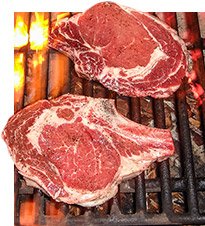
Protein Cycling Can Help You Build More Muscle!
It doesn't matter where you look, high-protein diets are the ''in'' thing in articles ranging from hardcore bodybuilding to fat loss and more. Here are some quick protein facts, a sample two-week cycle, and more.
The fitness universe is frequently split on seemingly every topic. On one hand you have the fitness enthusiasts who read online articles, training books, and muscle magazines to learn how to maximize their body composition, performance and health. On the other hand you have the mainstream fitness authorities who write articles and books for the mainstream person who is just looking to get healthier and lose a little bit of fat.

The fitness enthusiasts were doing low-carb, high-healthy-fat diets while the mainstream authorities were still saying the best way to lose weight was a low-fat diet. The fitness enthusiasts proceeded to pull out their hair and tried to tell everyone what they knew. Among all of this confusion, both camps did agree on one concept: Everyone should be eating a high-protein diet.
It doesn't matter where you look, high protein diets are the "in" thing in articles ranging from hardcore bodybuilding to fat loss and more.
Training experts, celebrity trainers, progressive doctors, and the guy down the street all know and tell whomever will listen that you need a high-protein diet. While it may be a sacred cow, we don't need to be on a high-protein diet all of the time.
Just The Facts

Before we can take a step forward, we have to take a step back and examine what is commonly accepted as fact when it comes to protein intake. The most frequent recommendation is to take in one gram of protein per pound of body weight.
If you weigh 200 pounds, then you had better get 200 grams of protein per day. This ensures that your body has the necessary amount of protein to rebuild, repair, and build muscle tissue.
The flipside is for the dedicated trainers who take upward of 1.5-2.0 grams per pound of body weight simply because they exercise more. The thought process here is that, in order to increase protein synthesis and nitrogen retention, more protein is needed. That's a whole lot of chicken, beef, fish and protein powder that you have to consume.
If I weigh 200 pounds, then I need 350-400 grams of protein in order to grow. Gastric issues aside, that stinks, even though it is the most commonly-held belief in the physique world today. Protein is great, but it isn't that great, and raising it at the expense of carbs or fats and other nutrients isn't an optimal way to grow, but as the old saying goes, "meat builds meat."
Muscle growth is a result of proper protein with carb and fat intake, not one over the other. Natural or not natural, our bodies have a limit to the amount of protein we can take in, digest, and use.
Our body is adaptive to whatever fuel we give it. Eat a lot of fat, get fat. Eat a lot of carbs and we'll use them all for energy. If we eat a lot of protein then we'll use it to a certain point. Maybe it's because carbs are viewed as the enemy and protein is viewed as the good guy, but protein intake is the same day after day without a thought.
Don't I damage muscle tissue more doing a full body routine of chin-ups, deadlifts and squats than I do when I just train shoulders? Yes. So why am I trying to feed my body the same way for both days?
Quick Protein Science
Protein is needed to construct growth hormone, insulin, and insulin-like growth factor I (IGF-I) . Twenty amino acids can be used to build muscle in the body, they are further divided up into the essential and nonessential groups.
Essential amino acids like isoleucine can't be made in the body. and have to come from our diet, while nonessential aminos like alanine can be made in the body. Protein is broken down in the stomach into even smaller amino acids by numerous enzyme processes.
The take-home message here is that all amino acids we eat are broken down into free amino acids and used for the metabolic processes, one of which is building muscle. What happens to them from there is affected by previous meals, individual hormonal factors, amino acid availability, total caloric intake, and your degree of physical exertion.

Our bodies store amino acids in two different places. The more well-known storage site is in the muscle and the liver. The second and smaller area is a free amino acid pool. The function of the free pool is to use individual amino acids to synthesis and oxidize protein and can be refilled by new amino acids that we ingest or protein that is broken down.
The free amino acid pool can only typically hold around 100-130 grams of protein, which is extremely small in comparison to the muscle and liver. The free pool is the connection between protein we ingest and whole-body protein, as well as being critical to protein turnover.
It's important to understand that the capacity to store amino acids is extremely consistent, and that isn't a good thing. This amount is what controls protein synthesis, which after all is why some "experts" advise 300 to 400 grams of protein per day ... right?
How is the amino acid pool controlled? By a process known as oxidation or in simpler terms a checks and balances system to establish a constant amino acid balance.
In the same breath that we adapt to training our body also adapts to protein intake . Basically in order to get the same effect of protein at a given amount we have to consume more protein.
This would essentially swing the anabolic and catabolic pendulum closer to the catabolic side in that you would frequent high protein feedings to not go into a catabolic state. We know that one of three characteristics of enzymes in biochemical processes is to regulate from a state of low activity to high activity and the opposite is also true .
So what happens when we have a constant supply of amino acids? Our body has no choice but to increase those enzyme processes thereby breaking down more amino acids .
It's important to understand that our body is continually turning protein over, we break down muscle and rebuild it throughout the course of the day. This process can be better illustrated by looking at the idea of diurnal cycling. Diurnal cycling is a protein sensitive process that prevents unnecessary increases in amino acids following protein ingestion as a result of the protein being pushed for tissue growth.
If we eat more protein and raise our protein storage during the day we have a corresponding protein breakdown that night. If we have a lower intake during the day we have less breakdown at night. The catch is that the diurnal cycle takes time to get acclimated to protein intake so the more you take in the more you need to have positive retention .
Why Cycle?
It's important to now look at what happens during times of a lower than normal protein intake. I'd like to compare protein cycling to carb cycling for a second. We know that our muscles can hold more carbs in the form of glycogen than it can in the liver which is a secondary source.
When we go low-carb or ketogenic, our energy first comes from the stored carbs in our muscle. It is the opposite way with protein since muscle protein can last longer than liver protein. During the first few days of a lower than normal protein intake, our muscles actually hold onto a good mount of protein while our liver loses some, enabling us to hold onto muscle .
Our protein enzymes now go from being up regulated to down regulated and after about three days protein degradation is actually lowered and creates better amino acid availability. All of this creates an anabolic environment for us to flood our enzymes with a high protein intake once we go back to consuming normal amounts.
During the low protein timeframe we had less available amino acids but still had maintenance amounts thus slowing down the oxidation of amino acids simply because higher then maintenance increases our oxidation of amino acids . It is also important to note that our body can recycle stored amino acids for more efficient use.
How To Do It
The first thing to remember is that while only excess protein is oxidized, we do have to "relax" the enzymes so that returning to a higher intake enhances our anabolic response. We will still be eating maintenance protein, as matter of fact we'll be using one gram per pound of body weight as our measuring stick.
Personally I think it is ridiculous to determine protein intake based on body weight or the percentage of protein in the diet. That's way too stone-aged for me, but for general purposes we'll go with the one-gram recommendation.
Initially I was inclined to recommend two different protein cycle protocols. The first protocol is a day-to-day method, but that affects protein enzymes only marginally, because carb cycling affects insulin sensitivity less than low carb diets.
Studies that have nitrogen homeostasis have found protein adaptation takes anywhere from 7-12 days. Therefore to be sure a proper enzyme process takes place we should aim for a two-week cycle which would look like the following for a 200-pound bodybuilder:
- Day 1-3: 200 grams of protein
- Days 4-6: 185 grams of protein
- Days 7-12: 200 grams of protein
The drop during days 4-6 is to further enhance the supercompensation effects that are to take place following day 12. It's important to remember that a protein cycle should never be done for someone trying to lose body fat.
Conclusion
This process is meant to be done during periods of growth where protein-sparing carbs are high. It's a break from the norm but you'll like the results from protein cycling.
Recommended For You

Women and Protein
Protein is an essential component of the muscle-building process. Yet, many women stray away from consuming enough protein for maximum results. Let go of fear, bust through myths, and learn about the power of protein!
Top 10 Best-Tasting Vanilla Protein Powders
You simply can't go wrong with vanilla, one of the world's most delicious and versatile flavors. Check out this list of the 10 best-tasting vanilla protein powders!



